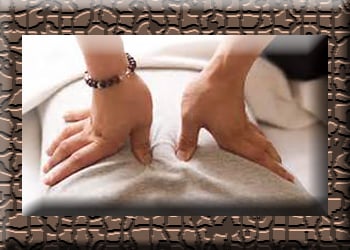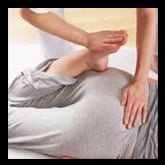
What is shiatsu therapy?
Japanese shiatsu therapy is a therapeutic massage that uses moderate-to- strong touch and is commonly known as “acupressure.” Although similar to acupuncture in approach and use, shiatsu doesn’t use needles.
Shiatsu pronunciation, according to a dictionary is “shē-ˈät-(ˌ)sü.” But if that looks confusing, try breaking it down to “she-ott-sue.” To define shiatsu, look at the Japanese meanings for the pieces that make up the word: “shi” (finer) and “atsu” (pressure).
Shiatsu benefits
By way of the energy system, Shiatsu benefits the entire body. Designed to restore flow of vital energy (“ki” in Japanese), the shiatsu treatment releases blockages in the shiatsu meridians. These meridians run throughout the body.
By keeping the meridians clear, one can ensure better functioning of the body’s organs and systems. When everything functions at its optimum levels, one achieves better health overall.
Shiatsu bodywork is simultaneously healing and relaxing. This type of bodywork is an excellent service to receive regularly, especially if you want to prevent health problems.
If anything is out of balance, this therapy can effectively kick-start the natural healing process.
Shiatsu is particularly suitable for releasing tension and providing stress relief. The following list includes other common ailments treated with shiatsu.
- asthma
- digestive disorders
- insomnia
- menstrual concerns
- migraines
- multiple musculo-skeletal problems (from lower back pain to tennis elbow)
- stomach ulcers
- tension headaches
What to expect before your shiatsu therapy
What to expect from shiatsu therapy always depends on the bodyworker, length of time for the appointment, and possibly the establishment. We have outlined the general shiatsu treatment below as a guideline.
Wear loose fitting, comfortable clothing preferably of natural fibers. Having shiatsu as a stand-alone service? If so, you will remain clothed for your session.
For your first appointment with a new practitioner, they will want to evaluate you and your physical condition prior to your therapy. This is because shiatsu is concerned with the person as a whole and the evaluation provides a personalized treatment.
The evaluation is painless. It might consist of and include the reading of your facial color and characteristics, tongue, posture, and body structure.
Don’t try to influence the evaluation with say, standing or sitting with exemplary posture when you normally slouch or slant. Your experience will be more effective if the evaluation is based on true information.

The bodyworker may also perform a hara (abdominal) diagnosis.
Reflex areas located in your abdomen correspond to each of the meridians. According to this therapy, this is where the body’s principal energies reside. Using this reading, practitioners determine which meridians are over-energized (jitsu), and which are deficient (kyo).
The goal to achieve from shiatsu bodywork is to disperse the energy. Energy is moved from over-energized channels to the deficient ones, creating balance.
Shiatsu performed as a stand-alone treatment will not require any oil. Additionally, the service may take place on a mat on the floor or on a massage table.
Shiatsu techniques
You may be treated in different positions: sitting up, laying face down, or on your side. The practitioner will work the length of the meridians. They will stretch and massage while simultaneously working acupressure points.
Pressure is the most characteristic technique applied in shiatsu therapy. To achieve this, the therapist might use their thumbs, knees, elbows or feet.
Pressing and manipulating influences the flow of energy. By pushing it through your meridians, it increases circulation and clears energy blockages.
If your practitioner is treating kyo meridians, they will apply gentle but deep pressure, holding while stretching.
If they are treating jitsu meridians, they will be more forceful in their technique, using shaking, slapping or vibrating to achieve the desired results.
After your session and how often to have shiatsu therapy
Shiatsu will relax you and yet also fill you with energy. You will probably feel grounded and secure.
Drink plenty of water. Shiatsu releases toxins, and the water helps flush them from the body.
If you are working on something specific with your therapist, ask them how often you should have it to achieve best results. Otherwise, ask how often for your specific lifestyle.
Make sure you can’t overdo it, and receive one as often as possible to maintain balance in your system. Maintaining balance and positive energy flow provides for a stronger immune system and better line of defense against illness and disease.
Categories for Shiatsu Therapy
Bodywork Treatments
Detox Methods
Types of Massage
As an affiliate, we earn a small commission for qualifying purchases via links on this site. The commission is paid by the advertiser and does not affect the price of the product or cost the consumer. It is how we help pay to keep this site free to use!
